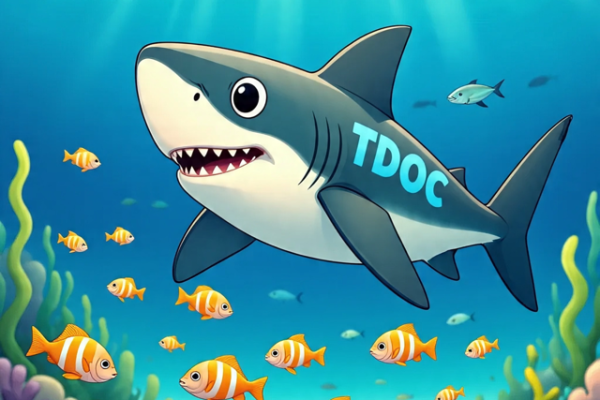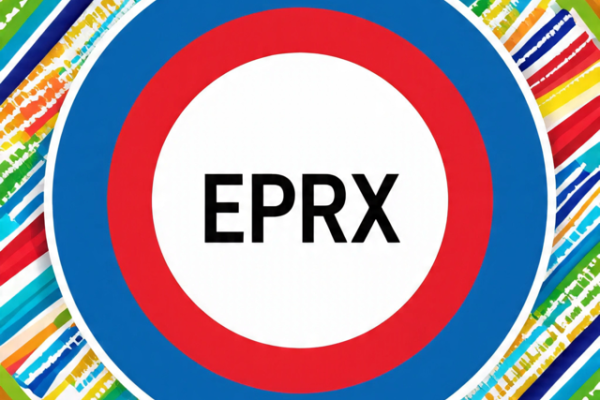“In my view, the biggest investment risk is not the volatility of prices, but whether you will suffer a permanent loss of capital. Not only is the mere drop in stock prices not risk, but it is an opportunity. Where else do you look for cheap stocks?” – Li Lu, American Businessman, Born: April 6, 1966
‘Tis Thursday and we just completed the last trading day during this Christmas holiday-shortened trading week. Many of us today again took home more presents during this ‘Santa Rally’ in the form of increased market valuations and/or captured capital gains as the markets were up strongly and widely once again. More positive news swelled regarding the Omicron COVID-19 situation as Merck’s (MRK, $75.73, -.56%) news hit where they had received FDA authorization for its at-home COVID-19 drug. This was also on the backside of Pfizer’s (PFE, $58.71, -1.41%) news where it had received approval for its own COVID treatment too. The macroeconomic schedule also produced a number of reports today. The personal income report confirmed a .4% M/M rise in November, while personal spending edged up .6. The PCE Price Index report showed a rise of .6% M/M & the core PCE Price Index moved up .5%, while on a Y/Y basis, the PCE Price Index increased 5.7%. The Initial jobless claims report for the week ending December 18 came in level at 205k, while continuing claims for the week ending December 11 fell by 8k to 1.859M. The new home sales report confirmed a 12.4% M/M rise in November moving to a seasonally adjusted annual rate of 744k units, while on a Y/Y basis, new home sales were confirmed to be off 14%. The final December reading for the University of Michigan Index of Consumer Sentiment clocked in a little higher at 70.6. The Durable goods orders report showed a 2.5% M/M rise in November.
As a result, the major indices closed significantly higher and rose throughout the day. The S&P 500 closed at 4,725.79 (+.62%) and a new record high as 9 of the 11 sectors closed in the green with the consumer discretionary sector moving up 1.2%, the industrials rising 1.2%, & the materials sector rising 1% to lead the way. The Dow 30 closed at 35,950.56 (+.55%) & the Nasdaq closed at 15,653.37 (+.85%). The small caps on the Russell also moved higher closing at 2,241.58 (+.89%), while the micro caps had very solid day as the iShares Micro-Cap ETF (IWC) closed at $140.99, +1.14% as bids were ample once again. The SPDR S&P Biotech ETF (XBI), a barometer of the smaller biotech stocks, smashed through the ~$116 resistance level & closed higher at $118.22, +1.46%%. The 52-wk range is $106.88 – $174.79 and we have swung back ~12 points in the last two weeks after establishing the 52-wk low.
The yield curve moved higher with the 2-yr yield closing at .69% up 3 basis points & the 10-yr yield rose 3 basis points to 1.49%. The U.S. Dollar Index moved lower by .1% to 96.03, gold prices rose again to close at $1,811/oz., +$7/oz., silver closed at $22.92, +$.14, & Bitcoin (BTC) closed at $50,759,71, +3.86%.
VP WATCHLIST UPDATES
Apple (AAPL) closed at $176.28, +.36%. Did you know that Mariah Carey has earned a ~$60M in streaming royalties for her “All I Want For Christmas Is You?”
Tesla (TSLA) closed at $1067 jumping a meaty 5.76%,now up up 17% in 3-days. Today, it was confirmed that Tesla will change its touchscreen available videogame and make it so that drivers cannot play it while the car is in motion. According to Bloomberg, Elon Musk said on Twitter that he’s “almost done” trimming his stake in Tesla Inc. hours after telling a satirical website that he already reached his target of reducing his stake in the electric-auto maker by 10%. Musk, now 50 yers old, is the world’s richest person and stands atop the Bloomberg Billionaires Index with a fortune of $260.9B.
The Walt Disney Company (DIS) closed at $153.63, +1.15%. Yesterday, Horacio Gutierrez has been named Senior Executive Vice President, General Counsel and Secretary of The Walt Disney Company. Mr. Gutierrez joins Disney from Spotify, where he has served as Head of Global Affairs and Chief Legal Officer. His appointment is effective February 1, 2022, and he will report directly to Mr. Chapek. Mr. Gutierrez will succeed longtime Disney veteran Alan Braverman who, as was announced in July, is retiring after nearly two decades as General Counsel. Prior to joining Spotify, Mr. Gutierrez was Corporate Vice President and General Counsel for Microsoft, overseeing the company’s legal affairs around the world, including support of the complete lifecycle of Microsoft’s products and services, from research and development to business development activities, M&A, litigation, legal compliance, and cybercrime prevention. He initially joined Microsoft in 1998 as Corporate Attorney, LATAM, and held a number of positions of increasing responsibility throughout the legal department during his 17-year tenure with the company, including Associate General Counsel, EMEA from 2002 to 2006; Deputy General Counsel, Intellectual Property and Licensing Group from 2006 to 2014; and Deputy General Counsel, Products and Services Group from 2014 to 2015. Disney will hold its annual meeting of shareholders on Wednesday, March 9, 2022 at 1:00 p.m. ET / 10:00 a.m. PT by virtual meeting and will be made available via webcast at
www.disney.com/investors.
On the small side, Atossa Therapeutics (NASDAQ: ATOS), a clinical-stage biopharmaceutical company seeking to develop innovative proprietary medicines in oncology and infectious disease with a current focus on breast cancer and COVID-19, rose to an intraday high of $1.85 prior to closing at $1.80, -2.17% on 3.477M shares of trading volume. On Dec. 22,
Atossa announced that it has initiated enrollment of its Phase 2 clinical study of oral Z-Endoxifen in Sweden. Participants in the study will be premenopausal women with elevated mammographic breast density, which is an emerging public health issue affecting more than 10 million women in the United States and many more worldwide. “
This is an extremely important milestone as it marks the next phase of developing our proprietary Z-Endoxifen,” said Steven Quay, M.D., Ph.D., Atossa’s Chairman and CEO.
“This study will help determine the relationship between daily doses of Endoxifen and reduction in breast density and will help us further assess safety and tolerability. We look forward to providing progress updates as they become available.” Physician-Scientist and CEO of Atossa, Steven Quay, MD, PhD, recently published an e-print on his research into a new coronavirus, named BANAL-236, reported by the Institut Pasteur in September 2021. At the time, BANAL-236 was the first bat coronavirus with high homology to SARS-CoV-2 that could directly infect human cells using the same receptor that SARS-CoV-2 uses. The new research reports that BANAL-236 has evolved the ability to infect human cells by an unknown mechanism that violates over 40 years of coronavirus research.
The COVID-19 e-print is available here and has also been submitted to Nature.
“When I read the paper from the Institut Pasteur and looked at the virus, I immediately assumed there was an error in either the way the sequence was assembled or a mix up in the lab with another virus to explain the infectivity,” Quay said. “
I contacted the Institut Pasteur with my findings and was deeply disturbed to learn that there was not, in fact, some simple mistake had occurred to explain things. I now knew we were in uncharted waters with a virus that is missing eight key elements that have been shown, over 40 years of research, to be required for growth.” Atossa management also recently presented at
“A Town Hall Q&A Event With Atossa Therapeutics Management Team” with Tribe Public.
You can view it clicking here. Atossa also announced recently that it had completed a pre-investigational new drug (PIND) meeting with the FDA to obtain input from the FDA on pre-clinical, clinical, manufacturing and regulatory matters in the U.S. for Atossa’s proprietary Z-endoxifen to treat breast cancer in the neoadjuvant (prior to surgery) setting.
On Monday, Fate Therapeutics, Inc. (NASDAQ: FATE), a clinical-stage biopharmaceutical company dedicated to the development of programmed cellular immunotherapies for patients with cancer, showcased positive interim Phase 1 data from the Company’s FT596 program for patients with relapsed / refractory B-cell lymphoma (BCL) at the 63rd American Society of Hematology (ASH) Annual Meeting and Exposition. FT596 is the Company’s off-the-shelf, multi-antigen targeted, iPSC-derived natural killer (NK) cell product candidate derived from a clonal master induced pluripotent stem cell (iPSC) line engineered with three anti-tumor functional modalities: a proprietary chimeric antigen receptor (CAR) optimized for NK cell biology that targets B-cell antigen CD19; a novel high-affinity, non-cleavable CD16 (hnCD16) Fc receptor that has been modified to prevent its down-regulation and to enhance its binding to tumor-targeting antibodies; and an IL-15 receptor fusion (IL-15RF) that augments NK cell activity. “The interim dose-escalation clinical data from our FT596 program in relapsed / refractory B-cell lymphoma demonstrate that off-the-shelf, iPSC-derived CAR NK cells can bring substantial therapeutic benefit to heavily pre-treated patients in urgent need of therapy, with high response rates and meaningful duration of responses,” said Scott Wolchko, President and Chief Executive Officer of Fate Therapeutics. “We are particularly pleased with the therapeutic profile that has emerged with FT596 in combination with rituximab, where over half of the patients treated with a single dose of FT596 at higher dose levels achieved a complete response with a favorable safety profile that is clearly differentiated from CAR T-cell therapy. We look forward to assessing a two-dose treatment schedule for FT596 to further define its potential best-in-class therapeutic profile and ability to reach more patients, including those earlier in care.” Shares of FATE closed at $64.34, +.37%.
InMed Pharmaceuticals Inc. (NASDAQ: INM), a leader in the development, manufacturing and commercialization of rare cannabinoids, closed at $1.50, +1.35% the high of the day. This week, InMed announced that a peer-reviewed scientific article entitled “Cannabinol Modulates Neuroprotection and Intraocular Pressure: A Potential Multi-Target Therapeutic Intervention for Glaucoma”, has been published in Biochimica et Biophysical Acta (BBA – Molecular Basis of Disease), a leading international journal focused on biochemistry and molecular genetics of disease processes and models of human disease in the area of aging, cancer, metabolic-, neurological-, and immunological-based diseases. The peer-reviewed article highlights research evaluating the use of cannabinol, or CBN, as a potential treatment option for glaucoma. Several studies were conducted to evaluate the survival of retinal ganglion cells, modulation of intraocular pressure and its effects on extracellular matrix proteins using in vitro and in vivo glaucoma models. These studies resulted in two key findings: first, CBN may promote neuroprotection of cells in the retina that are responsible for vision; and second, CBN may normalize intraocular pressure by attenuating changes in the extracellular matrix proteins. The article also reports on the comparison of CBN with other cannabinoids, including cannabidiol (CBD) and tetrahydrocannabinol (THC), with results indicating that CBN has a stronger effect and broader neuroprotective therapeutic range. These observations elucidate the therapeutic potential for CBN in the treatment of glaucoma.
INmune Bio, Inc. (NASDAQ: INMB), a clinical-stage immunology company focused on developing treatments that harness the patient’s innate immune system to fight disease, recently
presented data at the San Antonio Breast Cancer Symposium showing mucin 4 (MUC4) expression predicts worse survival and is a treatment resistance factor in women with triple negative breast cancer (TNBC). INB03, a DN-TNF therapy, can reverse TNBC treatment resistance by decreasing expression of MUC4 and reducing immunosuppression in the tumor microenvironment (TME) by increasing anti-tumor macrophage phagocytosis and increasing lymphocyte function in the TME. The poster will be presented by Dr. Roxana Schillaci, Instituto de Biología y Medicina Experimental, Buenos Aires, on December 10th. RJ. Tesi, M.D, Chief Executive Officer of INmune Bio, commented, “We are excited to have Dr. Schillaci present these data that expand on her previous findings on the role of MUC4 expression which predicts worse survival and resistance to therapy in HER2+ breast cancer therapy. Now, in both TNBC and HER2+ breast cancer, MUC4 predicts resistance to immunotherapy and an immunosuppressive TME that can be overcome with INB03.” Treatment with INB03 in murine models of breast cancer improves macrophage anti-tumor phagocytic activity, lymphocyte infiltration and function suggesting improved response to combination therapies of INB03 with inmunotherapy. Shares of INMB closed trading today at $1o.86, +6.47% after hitting an intraday high of $11.09.
Shares of INVO Bioscience, Inc. (NASDAQ: INVO), a medical device company focused on commercializing the world’s only in vivo culture system (IVC), INVOcell®, closed at $3.645 after hitting an intraday high of $3.875, but still well off of its 52-wk high of $12.30. A sell side analyst named Kyle Bauser, PhD. at Colliers Securities recently published his Buy Rating Report with a $6 Price Target. Last week,
INVO Bioscience, Inc. announced that it has entered into an expanded agreement with Ovoclinic, a group of clinics specialized in assisted reproductive treatments with four locations across Spain (Madrid, Marbella, Málaga, Ceuta) and collaborating centers around Europe, to accelerate adoption of INVOcell within their markets. The agreement includes the expanded adoption of INVOcell within Ovoclinic locations as well as establishing an INVO Center of Excellence for future training for the European Market. Cristina Gonzalez, embryologist and Quality Manager of Ovoclinic laboratories stated,
“After several successful trials implementing the exciting INVOcell fertility treatment, Ovoclinic aims to provide its patients with this effective alternative to the processes used so far in Spain in the field of reproductive medicine. We consider INVOcell to be an effective method of natural reproduction that involves the future mother at the very first moment of the process. We are confident that this innovative treatment will help many patients to choose this new alternative solution to achieve their dream of forming a family by actively participating in the reproductive process.” According to the World Bank, Spain, with total population of approximately 47 million people, has one of the lowest fertility rates in Europe, affecting approximately 15% of the population, or one in seven couples of reproductive ages. According to reports, in 2010, there were approximately one million couples requesting assisted reproductive treatment, however only 22% received one or more assisted reproductive treatment cycles. The average waiting time for an IUI or IVF cycle in a public health facility was 339 days. Ovoclinic reports that they maintain the best technical and human resources to deal with all kinds of infertility problems along with the simplest and most natural treatments to the most complex and advanced techniques pioneered in Spain. Ovoclinic also works in partnership with Ovobank, the first European Donor Egg Bank in Europe.
Shares of Hecla Mining Company (NYSE: HL), the largest silver producer in the United States closed at $5.27, -.38%.
Shares of NeuBase Therapeutics (NASDAQ: NBSE), a biotechnology platform company Drugging the Genome™ to address disease at the base level using a new class of precision genetic medicines, closed at $3.06, +5.52%. After the close, NeuBase reported its financial results for the fiscal year ended September 30, 2021, and other recent developments. “NeuBase is focused on significantly reducing the burden of untreatable morbidity and mortality caused by rare and common diseases across the globe. To achieve this goal, we designed, built, and validated a new precision genetic medicines platform technology that can uniquely drug the double-stranded human genome and address disease at the root of causality without many of the limitations of early precision genetic medicine technologies. We are poised to file our first Investigational New Drug (‘IND’) applications with the U.S. Food and Drug Administration (‘FDA’) beginning in calendar year 2022 and intend to scale into additional indications with increasing speed and efficiency thereafter,” said Dietrich A. Stephan, Ph.D., Founder, Chief Executive Officer, and Chairman of NeuBase. “This past year, we validated the ability of our technology in proof-of-concept studies to directly drug the double-helix of the human genome, including difficult double-stranded structures of RNA targets, and engage with mutant genes to resolve most causal mechanisms of disease. The validation of our platform’s capabilities included data describing that we have overcome many limitations of early precision genetic medicine technologies, such as biodistribution, tolerability, selectivity, manufacturability, durability, and scalability. We also presented data that our delivery shuttle enables compounds to elicit pharmacologic effects in multiple tissues, including in the brain and muscle, after subcutaneous administration in preclinical animal models,” said William Mann, Ph.D., M.B.A., Chief Operating Officer of NeuBase. “We recently nominated the development candidate for our myotonic dystrophy type 1 (DM1) program, which we believe has the potential to be a best-in-class therapy that offers a patient-friendly route of administration, a whole-body solution for the muscle, heart, and brain manifestations of the disease. Furthermore, the mechanism of action of our development candidate is designed to engage with the toxic RNA hairpin structure to release the splicing proteins, restoring normal RNA splicing and downstream protein production, including DMPK. We have initiated IND-enabling studies for this candidate, with data read-outs expected across CY2022. We expect these data will support the submission of an IND filing to the FDA in the fourth quarter of CY2022,” stated Sandra Rojas-Caro, M.D., Chief Medical Officer of NeuBase. “As a result of the nomination of our DM1 program candidate, we established CMC expertise at our new facility in Cambridge, Massachusetts that is co-located with our clinical development team, finalized the formulation of our development candidate to enable systemic routes, and completed process development. We also scaled-up manufacturing in-house and with contract manufacturing partners to support non-clinical toxicology, product stability, and Phase 1/2 clinical trials,” said Tony Rossomando, Ph.D., Chief Technology Officer of NeuBase. Dr. Stephan concluded, “In parallel, we are making significant progress in our therapeutic program for Huntington’s disease. For example, we have illustrated with preclinical in vivo data that our proprietary delivery technology allows our genome-targeting compounds to advance beyond intrathecal delivery and enabling a systemically administered allele-selective therapy, overcoming challenges seen with other programs. Furthermore, preclinical data show that our PATrOL™-enabled compounds can silence activating KRAS point mutations in vivo to inhibit protein production, which has the potential to target G12D and G12V, the two most common and historically ‘undruggable’ cancer-driving point mutations that represent the majority of KRAS tumors. We believe these data set the stage for a potentially first-in-class precision genetic medicine approach for oncology capable of selectively targeting mutations at the single-base level.”

FURTHER AFIELD
Today, Novartis (NVS, $86.66, +.41%), a leader in rheumatology and immuno-dermatology, announced the US Food and Drug Administration (FDA) has approved Cosentyx® (secukinumab) for the treatment of active enthesitis-related arthritis (ERA) in four years and older, and active juvenile psoriatic arthritis (JPsA) in patients two years and older1. Cosentyx is now the first biologic indicated for ERA, and the only biologic treatment approved for both ERA and PsA in pediatric patients in the US. These are the second and third approvals for Cosentyx in a pediatric population in the US, and Cosentyx now has a total of five indications across rheumatology and dermatology. Earlier this week, Novartis announced that it entered into a definitive agreement to acquire all of the outstanding share capital of the UK-based ocular gene therapy company Gyroscope Therapeutics.Geographic atrophy (GA) is an advanced form of dry age-related macular degeneration (AMD) that leads to progressive and irreversible vision loss1. There are no approved treatments for GA, making it one of the most significant unmet needs remaining in retinal diseases. GT005 is designed as an AAV2-based, one-time investigational gene therapy for GA secondary to AMD that is delivered under the retina. GT005 aims to restore balance to an overactive complement system, a part of the immune system, by increasing production of the CFI protein. Complement overactivation can lead to inflammation that damages healthy tissues, and it has been strongly correlated with the development and progression of AMD3. The CFI protein regulates the activity of the complement system. It is believed that increasing CFI production could reduce inflammation, with the goal of preserving a person’s eyesight. Gyroscope also has several additional assets in its pipeline in early discovery for retinal diseases. Novartis will make an upfront payment of $800 million and potential additional milestone payments of up to $700 million. Closing of the transaction is subject to customary closing conditions including regulatory approvals. Until closing, Novartis and Gyroscope Therapeutics will continue to operate as separate and independent companies.
Bloomberg reported that the Apollo Global Management Inc. is planning to lend about $4 billion to SoftBank Group Corp., marking the biggest ever loan of its kind in the private credit market, according to people with knowledge of the matter. The financing will be reportedly backed by holdings of SoftBank Vision Fund 2, which has made a range of equity investments in technology startups, the people added, asking not to be named discussing a private transaction. Terms are not yet final.
Economic Reports
On Monday, the Conference Board’s Leading Economic Index (LEI) that confirmed a 1.1% rise in November.
On Tuesday, the macroeconomic schedule also the Current Account Balance report for Q3 which came in at $214.8B , while the Q2 deficit was revised up to $198.3B.
On Wednesday, the third estimate for Q3 GDP confirmed an upward revision to 2.3%, while the GDP Price Deflator was revised slightly higher to to 6% The Conference Board’s Consumer Confidence Index report showed a rise to 115.8 in December. The existing home sales report showed a 1.9% M/M rise in November to a seasonally adjusted annual rate of 6.46M, however total sales in November came in 2% lower from a year ago. The weekly MBA Mortgage Index also dropped .6%, while the Purchase Index dropped 3.3% & the Refinance Index moved up 2.2%.
On Thursday, the personal income report confirmed a .4% M/M rise in November, while personal spending edged up .6. The PCE Price Index report showed a rise of .6% M/M & the core PCE Price Index moved up .5%, while on a Y/Y basis, the PCE Price Index increased 5.7%. The Initial jobless claims report for the week ending December 18 came in level at 205k, while continuing claims for the week ending December 11 fell by 8k to 1.859M. The new home sales report confirmed a 12.4% M/M rise in November moving to a seasonally adjusted annual rate of 744k units, while on a Y/Y basis, new home sales were confirmed to be off 14%. The final December reading for the University of Michigan Index of Consumer Sentiment clocked in a little higher at 70.6. The Durable goods orders report showed a 2.5% M/M rise in November.

















